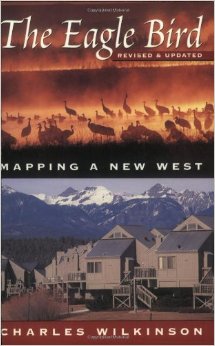‘Fatal Mountaineer: The High-Altitude Life and Death of Willi Unsoeld, American Himalayan Legend’
by Robert Roper
St. Martin’s Press, $25.95
Willi Unsoeld, the Washington state mountaineer and climbing legend, lived a life of astonishing conquests and staggering loss. It is a terrific story and one that should easily dwarf the drama of the Everest climbing fiasco recounted in the best seller “Into Thin Air.” Unfortunately, Robert Roper falls woefully short of the mark, and his thin, meandering writing all but destroys this compelling drama.
Unsoeld, one of the most accomplished American climbers of his generation, sealed his fame in 1963 with a first ascent of Mount Everest’s west ridge. He and a partner climbed over the summit with the audacious plan to cross the mountaintop and descend the opposite face, where they could meet the remainder of their party and replenish their supplies. They reached the summit at 6 p.m. Unable to descend before nightfall, they were forced to spend the night at 28,000 feet, an almost certain death sentence given their lack of equipment.
Only a freakish calm allowed their survival, and even with that, Unsoeld lost nine toes to frostbite. But he came back an undisputed American climbing hero.
Unsoeld, husband of former U.S. Rep. Jolene Unsoeld, had a lifelong fascination with the Himalayas. Indeed, he named his daughter after Nanda Devi, a spectacular Himalayan peak surrounded by a ring of forbidding and daunting mountains and cliffs.
His daughter was, by all accounts, a remarkable mountaineer in her own right. At 23, she formed a team that included her father to climb the peak for which she was named.
In “Fatal Mountaineer,” Roper recounts Devi Unsoeld’s 1976 attempt to climb her namesake. The climb from the outset was badly fractured by competing egos, by resentment from one of the team leaders that a woman was included on the climb, and by an almost reckless inattention to safety.
Notwithstanding all the obstacles, Devi Unsoeld almost realized her dream of reaching the summit. But on a precarious ledge in her tent at 23,000 feet, she became ill. After several days of battling the illness, weather and altitude, she died in the midst of a ferocious snowstorm.
Stricken, Willi Unsoeld committed his daughter’s body to the mountain and descended into a swirl of controversy over his actions, which some believe endangered his daughter.
Unsoeld, a professor at The Evergreen State College in Olympia at the time, buried his grief in his work and in teaching others his gift for mountaineering.
In 1979, he died in an avalanche on Mount Rainier’s Cadaver Gap while leading a group of novice climbers in a winter climb in treacherous conditions.
Almost any one of these elements – Unsoeld’s stunning first ascent of the west ridge of Everest, Devi Unsoeld’s tragic death climbing the mountain for which she was named or the avalanche that killed Willi Unsoeld – could have formed the basis of a compelling book.
But Roper falls short by almost any measure. The writing itself veers from pedantic to awkward, and the pacing is even worse. To Roper, almost any tangent is worth exploring, but only in superficial detail, from Himalayan religious traditions to Unsoeld’s psychological theories to mini-reviews of other accounts of Unsoeld’s climbs.
Stripped of this superfluous padding, what remains is at best a poorly written extended magazine-length recounting of the Devi climb, with a brief and incomplete summary of Unsoeld’s life appended. Some day Unsoeld’s life and death will be the stuff of a great book. Unfortunately, this book is not it.
Category: History
-

Adventure-filled life of a local climber merits better book
-

In harm’s way
Montana’s Glacier Park contains within it some of the most awe-inspiring mountains in America. But one of the park’s most prominent peaks also was the scene of a terrible disaster in the late 1960s, relatively unknown outside of Montana until this month’s publication of McKay Jenkins’ new book.
‘The White Death: Tragedy and Heroism in an Avalanche Zone’
by McKay Jenkins
Random House, $23.95
Just after Christmas 1969, five young men, ages 18 to 22, set out to climb the sheer ice wall of the north face of Mount Cleveland in the park. The ascent of the north face, one of the highest vertical walls in America, would have been a first, under the worst possible conditions in the dead of winter.
Days later, their failure to return set off an enormous and perilous search, involving both U.S. and Canadian authorities. Their tracks were eventually found at the edge of a massive avalanche. The search-and-rescue effort was abandoned when deteriorating weather made it all but impossible to continue, and the chances of the young men surviving became minimal.
Their bodies were eventually recovered during the spring thaw, buried deep within the cold grip of the avalanche, some upside down and hanging suspended in an ice cave formed by the spring runoff, more than 30 feet from the surface of the snow.
In his captivating new book, Jenkins unfolds the tragedy as a framework for a history of avalanches. The first detailed published account of the tragedy, the book has sparked an outpouring of interest nationally, including a cover story in Outside magazine and an upcoming excerpt in Reader’s Digest.
In the style of Norman MacLean’s best-selling exploration of a notorious Montana forest fire in “Young Men and Fire,” Jenkins combines the best of a study of the history and causes for avalanche disasters with a gripping story of young men pitting their strength and mountaineering skills against a formidable foe under unforgiving conditions.
Jenkins, a professor at the University of Delaware and a prolific writer for numerous publications, explained in a recent interview how, during a ski vacation in Glacier Park, he attended a slide show by park Ranger Bob Frauson. Frauson had cautioned the young men on the danger of their proposed trip, and helped to lead the search-and-rescue efforts.
Frauson’s story of the tragedy – almost completely unreported in the national press at the time – captured Jenkins’ imagination.
“Frauson essentially wrote the book in that presentation,” Jenkins explained. In the following two years, Jenkins pored through the general literature on avalanches and interviewed family, rescue officials and others about the Montana tragedy. Slipping in the science of avalanches “sideways” around the narrative results in a remarkably interesting study of the history, causes and sometimes disastrous Sudden, horrifically swift and massive, avalanches are difficult to predict, much less to survive. Avalanches are usually caused by instability between different layers of snow, and particularly dangerous slab avalanches are often launched when “depth hoar” – small glittering sugar granules of snow – forms between layers of snow.
When the unsuspecting climber or skier steps onto such a field of snow, the top level of snow can suddenly collapse with a “whoompf,” and trigger a fracture across the snowfield that moves in excess of 300 mph. This is followed by a sudden massive release of the top snow layers. Fueled by its sheer weight and greased by the underlying depth hoar, the avalanche roars down the mountain, with more than 2,800 times the power generated by an Amtrak locomotive, exploding everything before it and easily overtaking anyone in its path.
Although Jenkins avoids any suggestion that the Montana climbers should not have attempted the ascent, he notes the alarming increase in avalanche death: From 1950 to 1975, roughly half a dozen people died in avalanches in the United States each year. But in the past five years, it has leaped to an average of 28 per year and last year reached 32 fatalities – the worst in 75 years. European avalanches last year were even deadlier: 160 people died in the record snowfalls.
Avalanches, like hurricane-force winds, earthquakes or other natural forces, occur every day, and are not generally dangerous in and of themselves. “Only when human life is present – when the avalanche serves as the backdrop to human drama – are these natural forces `dangerous,’ ” Jenkins says.
Avalanche death has increased in recent years, not because avalanches are getting worse, but because humans are putting themselves at risk more often. Jenkins attributes this, in large part, to the elimination of most risk from the average American’s life.
The “alpha male” lawyer from Chicago carries an attitude into the mountains, where his status means nothing and his attitude is a downright liability. Bolstered with the latest expensive gear, many try to squeeze maximum risk into minimum time, untempered by experience, humility or real knowledge of hidden risks. The result, Jenkins believes, is often disastrous.
In this case, these young men were among the best-trained and most-experienced climbers of their generation. But, even armed with that skill and experience, because of the unique geologic structure of the mountain upon which they found themselves, they could not see the amount of snow above them, lying in wait for an errant footstep to release its awful power.
Humility is the lesson of the disaster, Jenkins says – that, and the knowledge that even the best-trained and best-prepared cannot anticipate the natural forces that sometimes lurk beyond our power to recognize or control.
Although more deadly avalanches have occurred, the Mount Cleveland disaster remains one of the nation’s worst, and a warning that mountains are dangerous places. Even strong young men with mountaineering expertise are no match against the danger that often lies beneath that soft white blanket of snow. “White Death” is an eloquent and spectacular tribute to five young men who died 31 years ago. -

Girl, Interrupted
‘Girl, Interrupted’
by Susanna Kaysen
Random House, $16.50
In 1967, fiction writer Susanna Kaysen, then 18, was diagnosed as having a “borderline personality disorder” after little more than 20 minutes with a doctor she had never seen before. She was summarily bundled into a taxi to the McLean Hospital outside Boston where she spent two years inside a special ward for teenage girls. There, she watched the late 1960s unfold and contemplated whether she was “crazy or right? In 1967, this was a hard question to answer.”
Now, 25 years after the fact, Kaysen tells her story in a haunting memoir of her stay at McLean. The startling clarity of her writing sharply illuminates her ward and “the shimmering, ever-shifting borderline that like all boundaries beckons and asks to be crossed.” As she notes, it’s easy to dismiss mentally troubled patients as different when they act differently. But someone “who acts `normal’ raises the uncomfortable question, What’s the difference between that person and me?” It’s a question that applies equally to convicts or the homeless or the poor. It’s somehow more comforting if they are “different” and the boundary is clear. But what if they aren’t, and it isn’t? -

‘The Eagle Bird: Mapping a New West’
‘The Eagle Bird: Mapping a New West’
by Charles F. Wilkinson
Pantheon, $20
The spotted owl is only the most recent and prominent symbol of the conflict between man and nature, development and preservation. In “The Eagle Bird,” University of Colorado law professor Charles Wilkinson explores the range of legal and political conflicts in the West: water rights, mining rights, Native American land claims and public land use.
Wilkinson writes beautifully, and he explores the nuances of issues often lost in the heat of the struggle. He succeeds in avoiding what has come to characterize much current writing on environmental issues: pejorative labels for opponents (“darker greens,” etc.) and strident and emotional mischaracterization of simple facts.
“The Eagle Bird” is a book that should be read by anyone interested in preserving the distinct character of the West. As Wilkinson writes, “By making the right choices now, we can promise (our children and grandchildren) steamy geysers and bright streams and lasting forests and great yellow bears and shadowy wolves and rewarding employment and welcoming communities.” And that is a goal on which both loggers and environmentalists can agree. -

Chasing Shadows
Three new books illustrate differing perspectives on historical inquiry, each by examining a different murder case in our nation’s history. The similarity ends there, however, for each approaches the task in markedly different ways.
Simon Schama’s “Dead Certainties (Unwarranted Speculations)” (Knopf, $21), marks a departure for the author of “Citizens,” a revisionist interpretation of the French Revolution, and “The Embarrassment of Riches,” a sweeping history of The Netherlands during its golden age. In contrast, Schama focuses his new book on two relatively obscure historical events to illustrate the limits of historical knowledge, the inherent bias of contemporary sources, and the uncertainty pervasive in any attempt to discern historical truth.
He uses two “tales” to make his point. The first involves English General James Wolfe, who was killed while winning the battle of Quebec in 1759. Schama tells of Wolfe’s dramatic final days from several perspectives, and working from a variety of sources, he illustrates patriotic fiction in the making.
His second, and somewhat more coherent “tale” tells of the mysterious and gruesome death of George Parkman, whose dismembered remains were discovered at Harvard Medical College in 1849. Professor John Webster, a distinguished chemistry professor was arrested and, in one of the most sensational criminal trials of the 19th century, was convicted and eventually executed for the murder.
Webster’s desperate attempts to avoid conviction, and his obvious anguish as he considered the plight of his penniless wife and three daughters, contrast with his popular portrait as an arch villain. In the end, the murder appears to have been less an act of savage calculation than Webster’s burst of anger over Parkman’s relentless pursuit of a debt; it triggered an accidentally overwhelming blow – and an unsuccessful attempt at coverup.
But even this is uncertain, as Schama “dissolve(s) the certainties of events into the multiple possibilities of alternative narrations.” In a poignant passage, he describes his visit to Webster’s home more than two centuries later: “One day, of course . . . (t)he pilasters will surrender to the bulldozer. Windows haunted by the white faces of three girls anxiously scanning a catcalling crowd will be smashed to shivers; the entire fabric of history pulverized to dust and expelled into the air.”
That, of course, is his entire point: the pulverization of history by the passage of time. As Schama concludes, “historians are left forever chasing shadows, painfully aware of their inability ever to reconstruct a dead world in its completeness . . . We are doomed to be forever hailing someone who has just gone around the corner and out of earshot.”
The contrast could hardly be greater with the second book, historian Gerald McFarland’s “The Counterfeit Man” (Pantheon, $22.95). In it, McFarland tells the “true story” of the Boorn-Colvin murder case that made headlines in the early 1800s.
The case involved the mysterious disappearance of Russell Colvin after a violent argument with his brothers-in-law on their farm in Vermont. Known for his frequent disappearances, Colvin was not seriously missed until several years later. The Boorn brothers were eventually convicted, one sentenced to die and another sentenced to life imprisonment.
Only at the last moment were the convictions overturned when “Colvin” suddenly appeared and town residents confirmed that it was, in fact, the real Colvin. Doubts, however, have persisted through the years, though McFarland has few. While he purports to tell “the true story,” his “startling new solution” amounts to little more than the theory that the accused brothers-in-law hired an imposter. The theory is neither new nor startling, but more fundamentally, McFarland admits to none of the doubt or uncertainty that is the entire point of Schama’s work.
The third book, “The Strange Death of Mistress Coffin” (Algonquin, $17.95), avoids both Schama’s uncertainty and McFarland’s blind faith by reconstructing a 17th-century New England murder as a novel.
The 1640 rape and murder of a young woman, her husband’s abandonment of his lawsuit against the most likely suspect, and the suspect’s disappearance all provide ample grist for author Robert Begiebing. He offers a tightly written and engaging novel with dramatic portraits of life in pioneer New England.
These three books – to quote Schama – “play with the teasing gap separating a lived event and its subsequent narration.” But only Schama admits his own limitations and addresses the complexities of historical research.